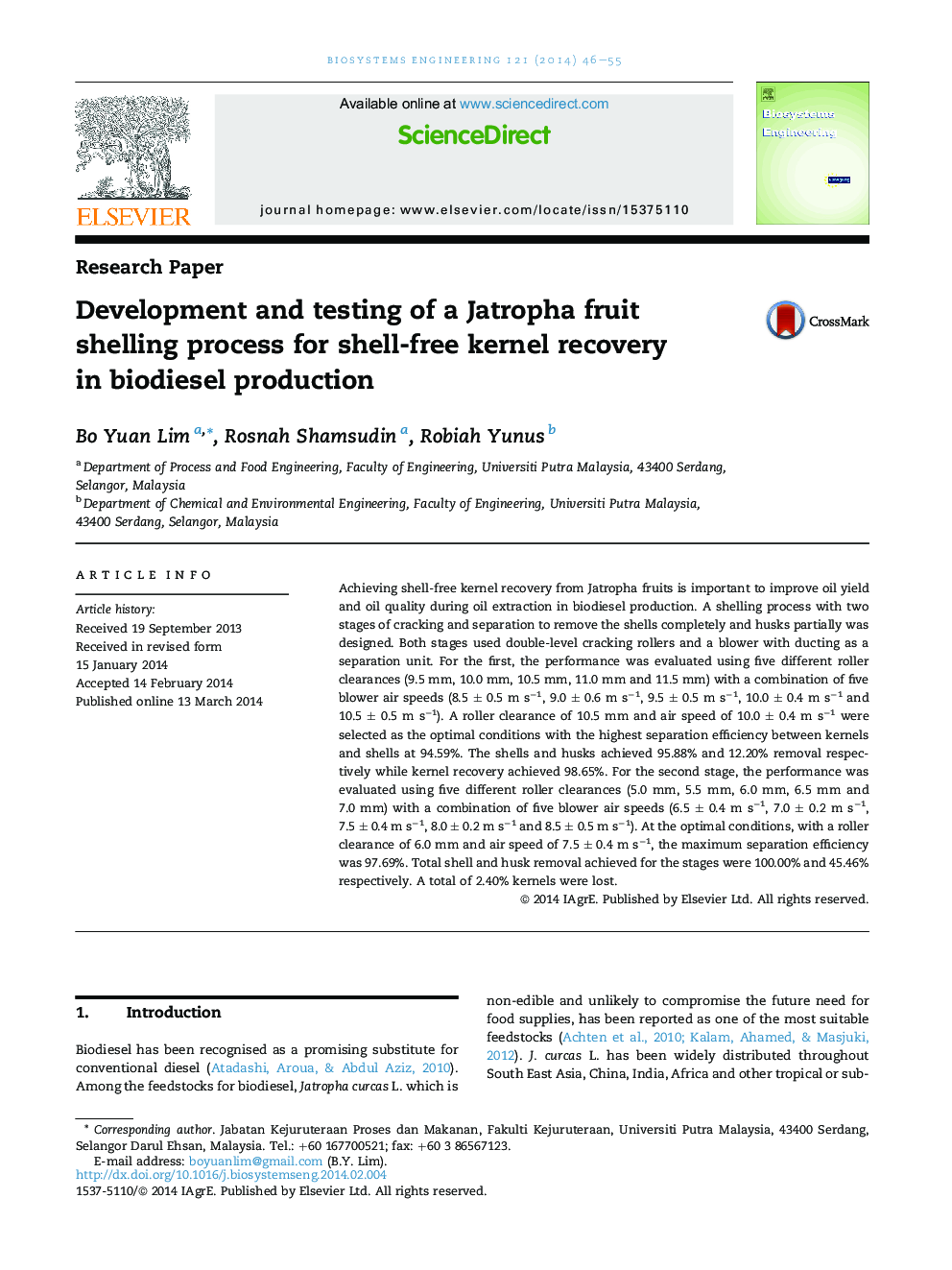| Article ID | Journal | Published Year | Pages | File Type |
|---|---|---|---|---|
| 8055207 | Biosystems Engineering | 2014 | 10 Pages |
Abstract
Achieving shell-free kernel recovery from Jatropha fruits is important to improve oil yield and oil quality during oil extraction in biodiesel production. A shelling process with two stages of cracking and separation to remove the shells completely and husks partially was designed. Both stages used double-level cracking rollers and a blower with ducting as a separation unit. For the first, the performance was evaluated using five different roller clearances (9.5 mm, 10.0 mm, 10.5 mm, 11.0 mm and 11.5 mm) with a combination of five blower air speeds (8.5 ± 0.5 m sâ1, 9.0 ± 0.6 m sâ1, 9.5 ± 0.5 m sâ1, 10.0 ± 0.4 m sâ1 and 10.5 ± 0.5 m sâ1). A roller clearance of 10.5 mm and air speed of 10.0 ± 0.4 m sâ1 were selected as the optimal conditions with the highest separation efficiency between kernels and shells at 94.59%. The shells and husks achieved 95.88% and 12.20% removal respectively while kernel recovery achieved 98.65%. For the second stage, the performance was evaluated using five different roller clearances (5.0 mm, 5.5 mm, 6.0 mm, 6.5 mm and 7.0 mm) with a combination of five blower air speeds (6.5 ± 0.4 m sâ1, 7.0 ± 0.2 m sâ1, 7.5 ± 0.4 m sâ1, 8.0 ± 0.2 m sâ1 and 8.5 ± 0.5 m sâ1). At the optimal conditions, with a roller clearance of 6.0 mm and air speed of 7.5 ± 0.4 m sâ1, the maximum separation efficiency was 97.69%. Total shell and husk removal achieved for the stages were 100.00% and 45.46% respectively. A total of 2.40% kernels were lost.
Related Topics
Physical Sciences and Engineering
Engineering
Control and Systems Engineering
Authors
Bo Yuan Lim, Rosnah Shamsudin, Robiah Yunus,
